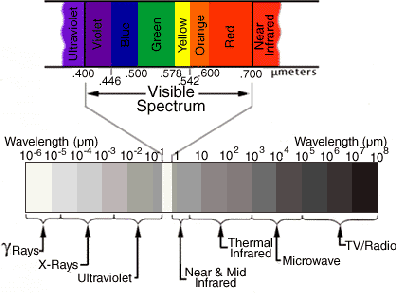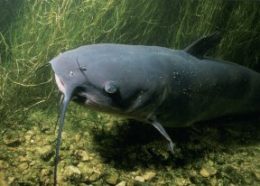A Sense of Danger
Can animals warn us if an earthquake or some other natural disaster is about to strike?
By Emily Sohn
Animals do amazing things. Birds migrate immense distances. Whales communicate across vast oceans. Honeybees remember familiar flowers. Crows can turn sticks into tools. Dogs sense when their owners are coming home. Elephants can imitate sounds. Monkeys do simple math. Apes can make artworks.
Can animals also warn us if a natural disaster is about to strike?
A few days before the Asian tsunami several months ago (see “Wave of Destruction”), a person living in Thailand watched thousands upon thousands of ants rush away from the beach into the forest. According to other accounts, elephants screamed and ran to higher ground as many as 10 days before disaster struck. Zoo animals hid in their cages. Dogs refused to go outside.
 |
|
Elephants may be able to detect sounds and vibrations at low frequencies that people can’t detect, allowing them to sense impending earthquakes.
|
Despite decades of research, scientists don’t know how to predict earthquakes and tsunamis. Maybe animals can do better.
Some people say that animals have a special kind of power for sensing the future. They call it a “sixth sense,” above and beyond the five senses we normally talk about—taste, smell, touch, sight, and hearing.
The scientific evidence for an animal sixth sense, however, is slim, says John Caprio. He’s a neurobiologist at Louisiana State University in Baton Rouge. He studies taste and smell in fish.
If reports about animals escaping danger are actually true, Caprio says, the animals must be responding to real sensations, rather than using some mysterious type of otherworldly perception.
“These aren’t strange or paranormal events,” he says. Over generations, animals have developed their senses in ways that allow them to detect sounds, smells, vibrations, or other sensations that people can’t detect.
A wide spectrum
We use our senses to gather information all the time, from cafeteria smells that tell you it’s almost lunchtime to the look on your teacher’s face that says she’s about to pop a quiz.
But there’s more to the world than meets the eye, nose, skin, ears, and tongue. Scientists have discovered a variety of unexpected ways that animals and even people sense the world around them.
For one thing, there’s a whole spectrum of light and sound that lies beyond what we normally see or hear.
 |
|
The human eye can detect light of only certain wavelengths (from violet to red). Some animals can detect ultraviolet light or infrared light.
|
| NASA |
Suppose you could see only blue, green, and yellow. You would probably find it absolutely amazing that all cars stopped at red lights because you wouldn’t know that the lights were red. Instead, you might think that the cars were alien machines that had ESP and magically knew when to stop.
In a similar way, lots of birds and bugs see shades of ultraviolet and infrared that our eyes aren’t equipped to pick up. Seeing these different kinds of light helps them survive, communicate, and escape predators.
Our ears are tuned to a certain range of sounds—those with frequencies between 20 and 20,000 hertz. One hertz is equal to 1 cycle (or vibration) per second. As frequency goes up, pitch does, too.
Dogs can hear sounds up to 45,000 hertz. Bats can hear up to 120,000 hertz. Dolphins and some of the fish they eat can hear frequencies greater than 200,000 hertz.
Elephants and whales, on the other hand, communicate using frequencies that are lower than those we detect. Flies can even hear each other land on a blade of grass, Caprio says.
The ability to hear things that we can’t hear can help explain what looks like strange animal behavior. If your dog suddenly starts whining, for example, it might be simply that she’s heard something your ears can’t detect.
Extraordinary taste
Some animals tend to rely on senses that people just don’t use as much.
Dogs are famous for their keen sense of smell, for instance, which can explain why Spot sometimes runs like crazy for blocks until he finds the house where cookies are baking, even though you have no idea what’s gotten into him.
 |
|
Catfish have an amazing sense of taste.
|
| Eric Engbretson, U.S. Fish and Wildlife Service |
Likewise, catfish have an extraordinary sense of taste. Their entire bodies are covered head to tailfin with taste buds that allow them to detect the chemical world around them.
“Catfish are swimming tongues with big noses,” Caprio says. If we were built the same way, we’d be able to taste things with our knees and elbows. Imagine what rolling around in a tub of chocolate powder would be like!
Caprio is studying catfish and other species of fish to try to understand why animals have two separate chemical sensory systems for taste and smell, even though these senses tap into similar information.
Detecting vibrations
When it comes to sensing earthquakes and tsunamis, feeling the vibrations they create in the earth is probably key, says Joel Greenspan. He’s a sensory neuroscientist at the University of Maryland, Baltimore.
All mammals, including people, have extremely sensitive sensors called Pacinian corpuscles in their skin and other membranes. In laboratory experiments, Greenspan says, people can feel a vibrating tuning fork when it is pressed into their skin to a depth of just one-tenth of a micron. A human hair, by comparison, is 100 microns wide.
 |
|
Human skin, as shown in this magnified cross section, is very sensitive to vibrations.
|
Even though we have such a fine-tuned sense of vibration, we don’t practice using it in the real world nearly as much as animals do. “Animals are always in direct contact with the ground,” Greenspan says. “We don’t do that anymore. We have shoes and clothes. We pay attention to other people, sights, and sounds.”
Pacinian corpuscles are especially abundant in the paws of elephants and other creatures and in the guts of cats, Greenspan says.
That way, if an animal is standing or lying around, it can sense the footsteps of predators coming its way. Perhaps the animals in Asia mistook the earthquake and tsunami for a monster coming to eat them. In response, they ran in the opposite direction and ended up saving themselves.
There might also still be something to the sixth sense idea, but with a twist. It’s turning out that animals sense things that are real but out of our league.
Pit vipers, for instance, have heat-seeking systems. And birds, frogs, salamanders, and other animals are able to sense Earth’s magnetic field to orient themselves and find their way.
Solid clues
Even though scientists are far from knowing everything about why animals behave the way they do, most scientists are sure there must be rational explanations. And many of the explanations have to do with understanding senses by looking for solid clues.
Studying the physics and chemistry of animal senses might never explain everything about why animals act the way they do. Further research, however, might help us understand what it feels like to be a fish, a cat, an elephant, or a mouse. From their perspectives, the world must look, smell, taste, sound, and feel very different than it does to us.
And by paying attention to the animal world, we might learn how to help keep ourselves safe in the face of earthquakes, volcanoes, tsunamis, and other natural disasters.
Going Deeper:







